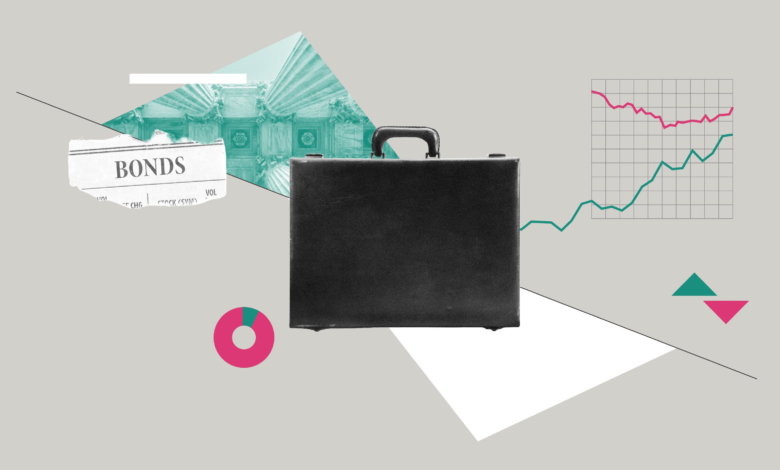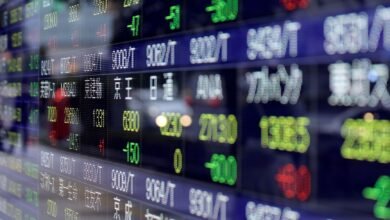What Investors Need to Know About the Steepening Yield Curve

Key Takeaways
- The Treasury yield curve steepened ahead of the Fed’s first rate cut, and it is likely to keep steepening with more cuts on the way.
- Shorter-term yields have fallen, while yields on longer-dated bonds could remain elevated thanks to the threat of higher inflation and investor concerns surrounding the federal deficit.
- A steeper curve means more opportunities to capture yield in longer-dated bonds, but it also comes with risks.
The landscape for bond investors is changing. Now that the Federal Reserve is cutting interest rates, strategists are expecting short-term Treasury bond yields to fall while yields on bonds with longer maturities stay high. In Wall Street lingo, that means the yield curve (a snapshot of the US Treasury market) is steepening.
The spread between the 10-year and two-year Treasury yields was 0.50 percentage points as of Friday, compared with 0.37 percentage points six months ago. It’s a big change from earlier this year, when yields across the bond market where relatively even. It’s a bigger change compared with the years following the pandemic, when short-term yields surpassed those on longer-term bonds.
For bond investors, a steeper curve provides opportunities to capture higher yields in longer-dated bonds. However, strategists say it’s important to understand the new risks that accompany that steeper curve. Cash and shorter-dated securities are subject to reinvestment risk—if yields fall, proceeds from those assets may not be able to be invested again at their original rate. On the other hand, longer-dated bonds could be subject to volatility, thanks to fluid fiscal and trade policy, an uncertain economic outlook, elevated inflation, and political pressure on the Fed.
Here’s what investors need to know.
What is the Yield Curve?
The yield curve is a graphical representation of government-bond yields across different maturities, often from two-year Treasury notes to 10-year Treasury bonds. Bonds with longer maturities generally yield more than bonds with shorter maturities. That’s because investors expect extra compensation for the risks—like inflation and economic uncertainty—of locking their money up with the government for longer. The result is a curve that slopes upward.
From Inverted to Steepening
In rare circumstances, shorter-term yields can climb higher than longer-term ones, which results in an inverted yield curve. That was the case for roughly two years beginning in the fall of 2022, when the Fed began aggressively hiking its benchmark interest rate to combat runaway inflation in the wake of the pandemic.
That unusually long inversion fueled spirited debate about whether a recession was in the cards, but the slowdown never materialized. Carol Schleif, chief market strategist at BMO Wealth Management, says the fundamentals never supported the conclusion that a recession was imminent. “The bond market actually has been very nuanced,” she says.
The curve un-inverted in the fall of 2024, when shorter-dated yields began dropping as investors anticipated the Fed’s first rate cut.
Market watchers saw the same phenomenon unfold this summer, as shorter-dated yields dropped ahead of the Fed’s September 2025 rate cut. “Everybody believed that the cut was coming,” says Dominic Pappalardo, chief multi-asset strategist for Morningstar Wealth.
Longer-term yields have edged down too, but not as much as shorter-term ones. On the longer end of the curve, investors have endured volatility amid an uncertain outlook for fiscal policy, inflation, and economic growth.
“You’re taught that bonds are supposed to be the stability in your portfolio, and yet yields have been all over the map, which means prices have been all over the map,” says BMO’s Schleif. When investors worry that inflation will be higher in the future, or are concerned that the government will struggle to pay its debt obligations, the bond market can get jittery and yields can climb.
“The common adage over history is that the Fed controls the yield curve two years and in, and the market controls the yield curve 10 years and longer,” Pappalardo explains. “That seems to be holding true over the last six months or so.”
More Steepening Ahead
Analysts say that all signs point to more steepening ahead. With more rate cuts from the Fed likely, Pappalardo expects short-term yields to fall further. At the same time, it’s possible that longer-term yields will remain rangebound at their current levels—or climb even higher.
For one, inflation close to 3% doesn’t give long-term yields much room to fall, according to Kathy Jones, chief fixed income strategist at Schwab. On top of that, “Fed easing when inflation is too high—and possibly edging higher—just accelerates expectations that inflation could get worse. That’s keeping yields up,” she explains.
The tone of monetary policy is important too. “It matters why the Fed is cutting,” says BMO’s Schleif. “If the Fed’s cutting because growth is falling off a cliff, then those long yields tend to drift down. But if the Fed is cutting, either because it’s being politically pressured or because growth is super strong, that long end has a tendency to migrate up.”
Simmering worries about the federal deficit are also a factor. “If we have to keep issuing long US Treasury debt, at some point, people will demand higher yields to take on that debt,” Pappalardo says. Reduced foreign demand for US bonds could also drive prices lower and push long rates higher. Add it all together and “the longer end is going to have a hard time coming down,” he says. “None of those things seem to be going away in the next six months.”
How to Invest When the Yield Curve Steepens
In general, strategists say falling short-term yields should be a signal to investors to reevaluate their holdings in cash and other short-dated assets. With more rate cuts on the horizon, those securities won’t be able to keep delivering the yield they did six months ago—a phenomenon called reinvestment risk.
“If you stay very short and rates go down, you’re reinvesting at lower and lower rates and your income stream shortens,” says Schwab’s Jones. With cash yielding less, investors can consider adding more duration to their portfolios. Duration is a measure of interest rate sensitivity, and longer-term bonds have greater durations than shorter-term ones.
Longer-duration bonds can offer more yield, but they also carry a different kind of risk, especially if rates keep rising and the value of those bonds falls. “If you need to cash in, [there’s a] good chance you’re going to have a price decline and a capital loss that will offset some of the income you’re earning,” Jones explains.
Morningstar’s Pappalardo cautions that it might not make sense for everyone to take more interest rate risk, but investors who want to maintain the current yield in their bond portfolio will need to extend maturity to do so.
For Jones, it’s all about balance: “In an environment like this, it doesn’t make sense to stay really short and it doesn’t make sense to be really long.” That’s why many bond pros have been advocating for a sweet spot in what’s known as the “belly” of the yield curve—bonds with maturities around five to seven years.
BMO’s Schleif says investors should be clear about why they’re holding bonds at all. Is it for stability and income, or to generate outsized returns? “For the most part, fixed income is the conservative ballast in the portfolio. If you’re going to be a risk taker, there are many places in the equity market and elsewhere to get that risk.” For investors who are also looking to capture a little extra return from bonds, Schleif says an opportunistic manager can help identify dislocations in the market.
Bond Fund Strategies for a Steepening Curve
Investors who hold individual bonds to maturity don’t have to worry too much about fluctuating yields. Over time, they can generally expect to earn the starting yield on a bond when that bond matures, unless they sell it early. Within bond funds, however, portfolio managers often take a much more active approach to managing risk and yield under the hood, especially when the curve is steepening.
There are “infinite ways” to arrive at a fund’s duration target via combinations of bonds with different maturities, says Morningstar’s Pappalardo. He explains that the yield curve today is a little less steep compared with its historical average, and the spread between two- and 10-year bonds is currently a little lower than what Morningstar analysts consider its fair value. When that’s the case, Pappalardo says a portfolio manager might be a little more comfortable taking on some extra interest rate risk by adding duration on the longer end and offsetting it with more holdings on the shorter end, which could see price appreciation if yields fall. Bond prices move inversely with yields.
Managers can also employ a strategy called “rolling down the curve,” Schwab’s Jones explains. They can sell bonds on the steeper part of the curve as their maturities shorten, capturing some extra price return because the bond’s yield will now be comparable to bonds of shorter maturities that are further in on the curve. “It’s a nice way to generate some added return to the income stream,” she says, which helps fund managers offer a mix of yield and price appreciation to investors.
Credit: Source link






